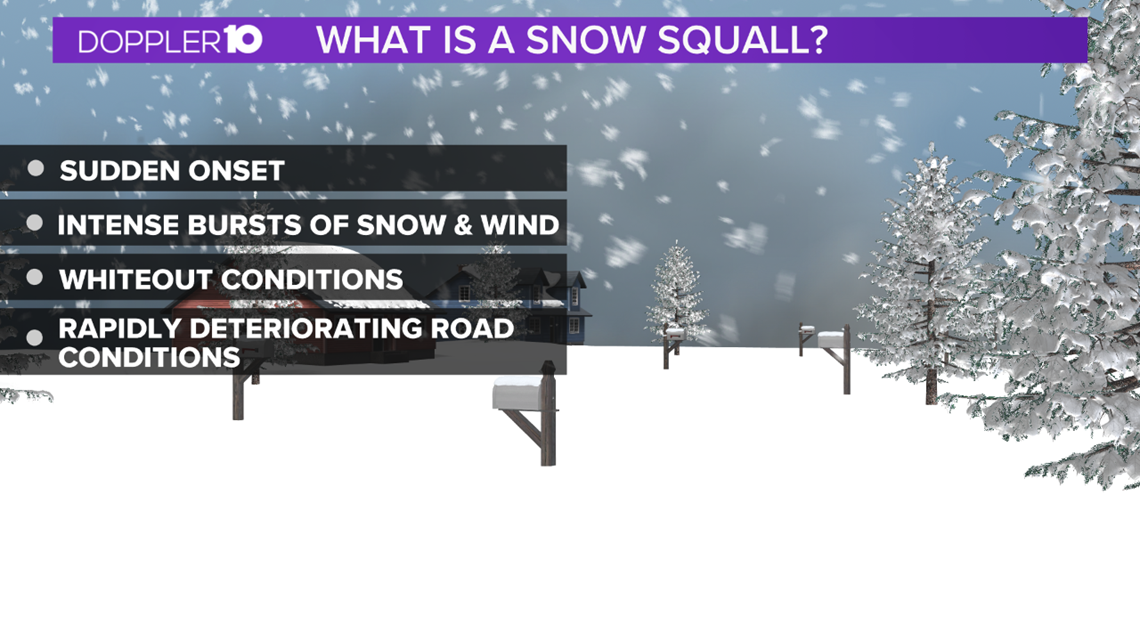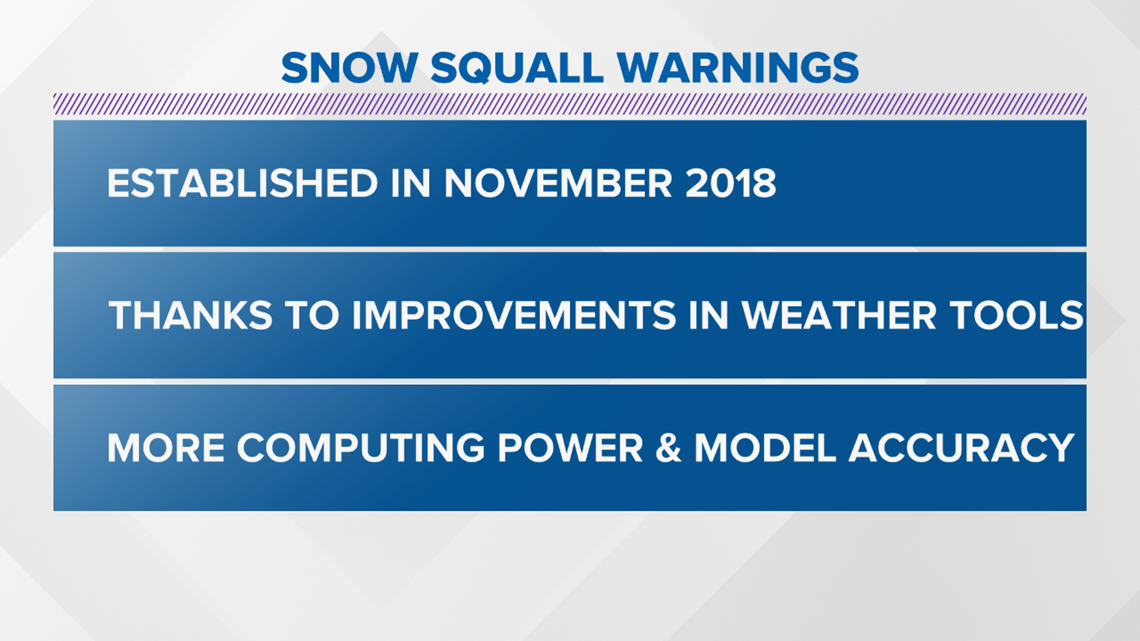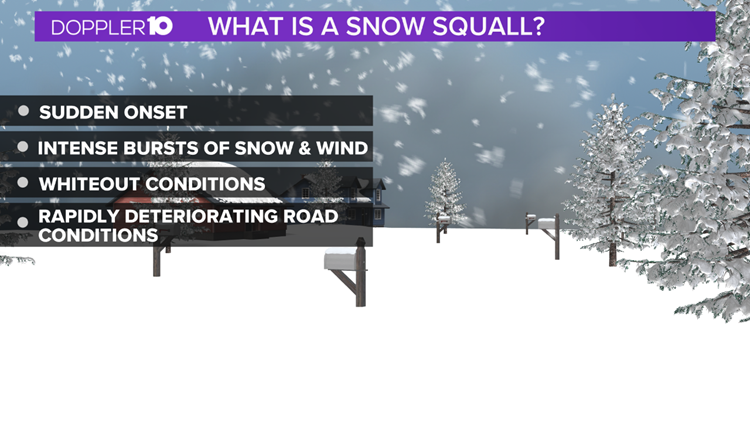Since entering 2021, we haven't seen much snow in Central Ohio--This is typically the snowiest month of the year.
While we've lacked any large scale winter storms this month, we have seen some smaller scale winter weather events that have caused some headaches out on the roadways.
These types of events are things like scattered snow showers, snow bands and even snow squalls.
According to the National Weather Service(NWS), "A snow squall is an intense short-lived burst of heavy snowfall that leads to a quick reduction in visibilities and is often accompanied by gusty winds. They may be characterized by one main squall or multiple squalls."


We haven't seen any snow squalls here in Columbus, but there have been some of these brief whiteout conditions across the state this month.
Matt Bruning, Statewide Press Secretary for the Ohio Department of Transportation(ODOT) tweeted this video of a snow squall near Bellefontaine, Ohio late last week.
The duration of the video is less than 10 minutes and you can see how fast the weather conditions deteriorate over the roadways.
These types of events may seem similar to summer-time thunderstorms, which can form and dissipate within a matter of 30 minutes.
While these storms are often short-lived, they can bring life-threating conditions as they move through.
Snow squalls need similar ingredients to that of thunderstorm, but on a much different scale. Those ingredients include:
A) Moisture
The atmosphere needs to have enough moisture present in the air in order to produce snow and clouds. Once there is enough moisture in the air, clouds and eventually precipitation can form.
B) Lifting Mechanism
There needs to be some sort of mechanism that helps to lift air in the atmosphere to produce clouds and precipitation. This is most commonly supported by a weather front move through an area. Another form of lift would be orographic lift, which is air being forced up into the higher elevations due to topography.
C) Atmospheric Instability
The more instability or faster rate of air rising through the atmosphere will lead to faster cloud development and precipitation formation.
When these ingredients come together, we get these snow squall events that produce these short-lived whiteout conditions.
With events that can severely alter weather conditions, the National Weather Service rolled out a new alert just for snow squalls.


With the advancements in weather technology, meteorologists can now more accurately recognized and alert the public on snow squalls occurring in the area.
For those that haven't seen a snow squall warning yet, they look like this:
The NWS office in Charleston, West Virginia issued a few of these warnings over the past week due to the favorable snow squall conditions in the atmosphere.
The time this tweet was sent out was at 6:03 a.m. and was set to be valid until 6:30 a.m.
Again, these kind of events are typically short-lived(less than 2 hours), but can certainly pack a punch--and catch you off guard.
This goes to show how quickly these events can last and how important it is to get this information out to the public.



